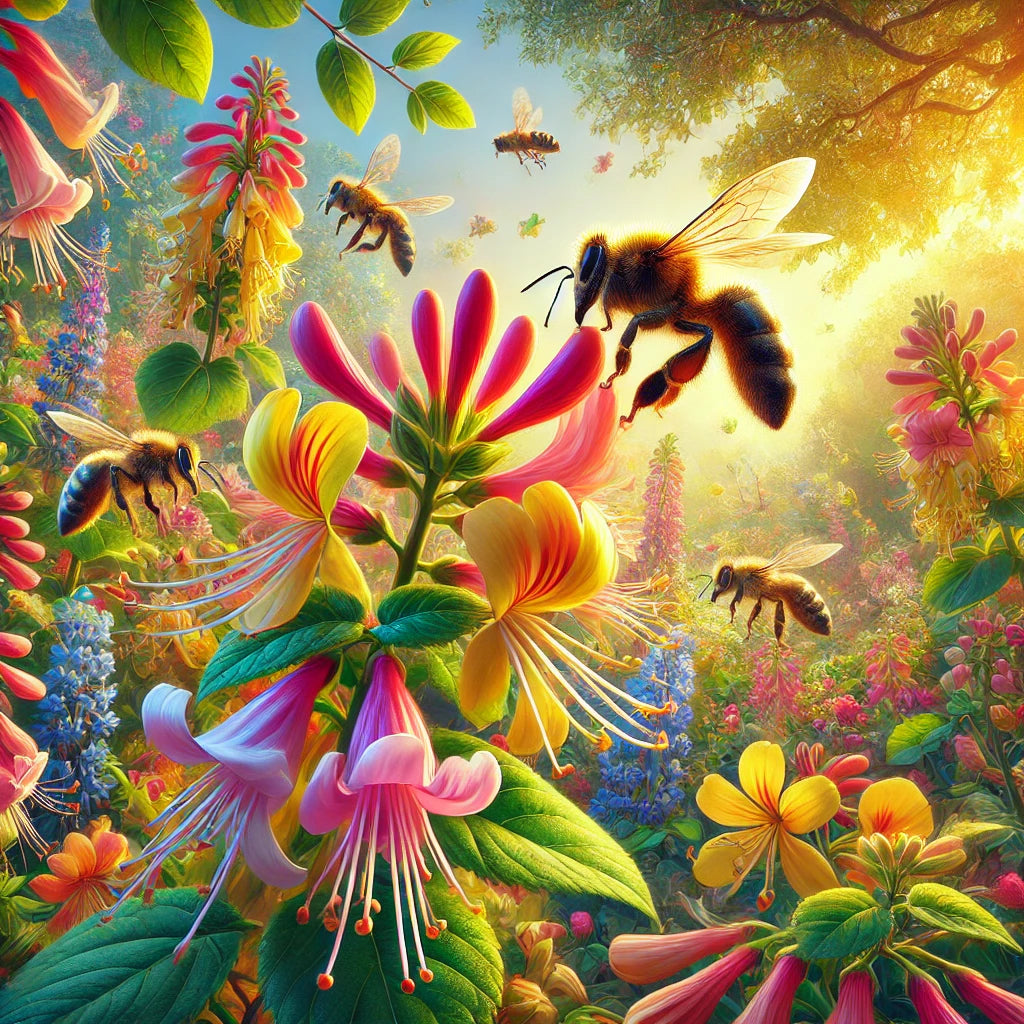Honey bees are known to enjoy honeysuckle, especially varieties that offer sweet nectar and an appealing fragrance. However, the tubular shape of some honeysuckle species can make it difficult for honey bees to access the nectar, which might lead them to prefer flowers with more accessible structures. That said, honeysuckle still attracts bees because of its scent and nectar concentration, making it an important plant in gardens and wild environments.
In addition to honeysuckle, honey bees also seek out other flowers that fit their preferences, such as clover, lavender, and daisies, which provide them with ample nectar. These flowers, shaped for easy access, perfectly align with pollinator syndromes.
The Benefits of Honey Bees for Pollination and Agriculture
Honey bees are crucial not only for the pollination of wildflowers but also for agriculture. They pollinate a wide variety of crops, including fruits, vegetables, and nuts, ensuring high yields and quality production. The flowers these bees pollinate have evolved to accommodate their feeding patterns, providing bright colors and nectar-rich structures. Without bees, many plants, especially food crops, would struggle to reproduce, leading to a significant reduction in agricultural productivity.
The benefits of bees extend far beyond agriculture. Bees are essential for maintaining biodiversity, supporting ecosystems, and ensuring that natural landscapes remain healthy.
What Flowers Do Honey Bees Prefer?
Honey bees show a strong preference for flowers that offer easy access to nectar. Brightly colored flowers like sunflowers, lavender, and daisies are among their favorites. The shallow structures of these flowers, coupled with their landing platforms, make it easy for honey bees to collect nectar. Additionally, flowers with mild fragrances are more likely to attract bees, aligning perfectly with the principles of pollination syndromes.
In addition to their preference for honeysuckle, honey bees are also attracted to clover and wildflowers, which provide ample nectar while supporting the bees’ pollination efforts. By planting a diverse range of flowers, you can ensure your garden is a haven for honey bees.
Why Pollinator Syndromes Matter for Agriculture
Pollinator syndromes are vital to the health of both natural ecosystems and agricultural systems. Crops like apples, almonds, and berries rely heavily on pollination by honey bees to reproduce. By evolving floral traits that match the feeding habits of bees, these plants can ensure their survival and maintain healthy food production.
Farmers and gardeners can support these efforts by planting pollinator-friendly flowers near crops. This helps increase the number of honey bees visiting their farms, leading to better yields. Understanding why honey bees are vital to agriculture allows us to take necessary steps to protect their populations and promote healthy crop growth.
Conclusion: Built by Bees to Last
Honey bees and the flowers they pollinate are part of an intricate ecological dance, one that has evolved over time through pollinator syndromes. Flowers like honeysuckle, lavender, and clover have adapted to meet the needs of honey bees, while bees, in turn, ensure these plants continue to thrive through pollination. Whether you’re managing a garden or a large-scale farm, cultivating bee-friendly environments is key to supporting these hardworking pollinators.
For those looking to enhance their beekeeping efforts, products like beetle traps for beehives and bee trap attractants can help maintain healthy colonies. By understanding and supporting the connection between bees and flowers, we ensure that both continue to thrive in the future.
Frequently Asked Questions About Honey Bees
Q1. What is a pollination syndrome?
Pollination syndromes are the characteristics that flowers develop to attract specific pollinators, such as bees, birds, or bats.
Q2. Do honey bees like honeysuckle?
Yes, honey bees are attracted to honeysuckle for its sweet fragrance and nectar, though some honeysuckle varieties may present challenges due to their tubular shape.
Q3. Why are honey bees important for agriculture?
Honey bees are essential pollinators for many crops, including fruits, vegetables, and nuts. Their work ensures healthy yields and biodiversity in agricultural systems.
Q4, What flowers do honey bees prefer?
Honey bees favor brightly colored flowers with accessible nectar, such as sunflowers, daisies, and clover, which align with their foraging habits.
Q5. How can I attract more bees to my garden?
To attract honey bees, plant a variety of flowers, such as honeysuckle, lavender, and clover. Avoid harmful pesticides and consider using natural bee attractants.



